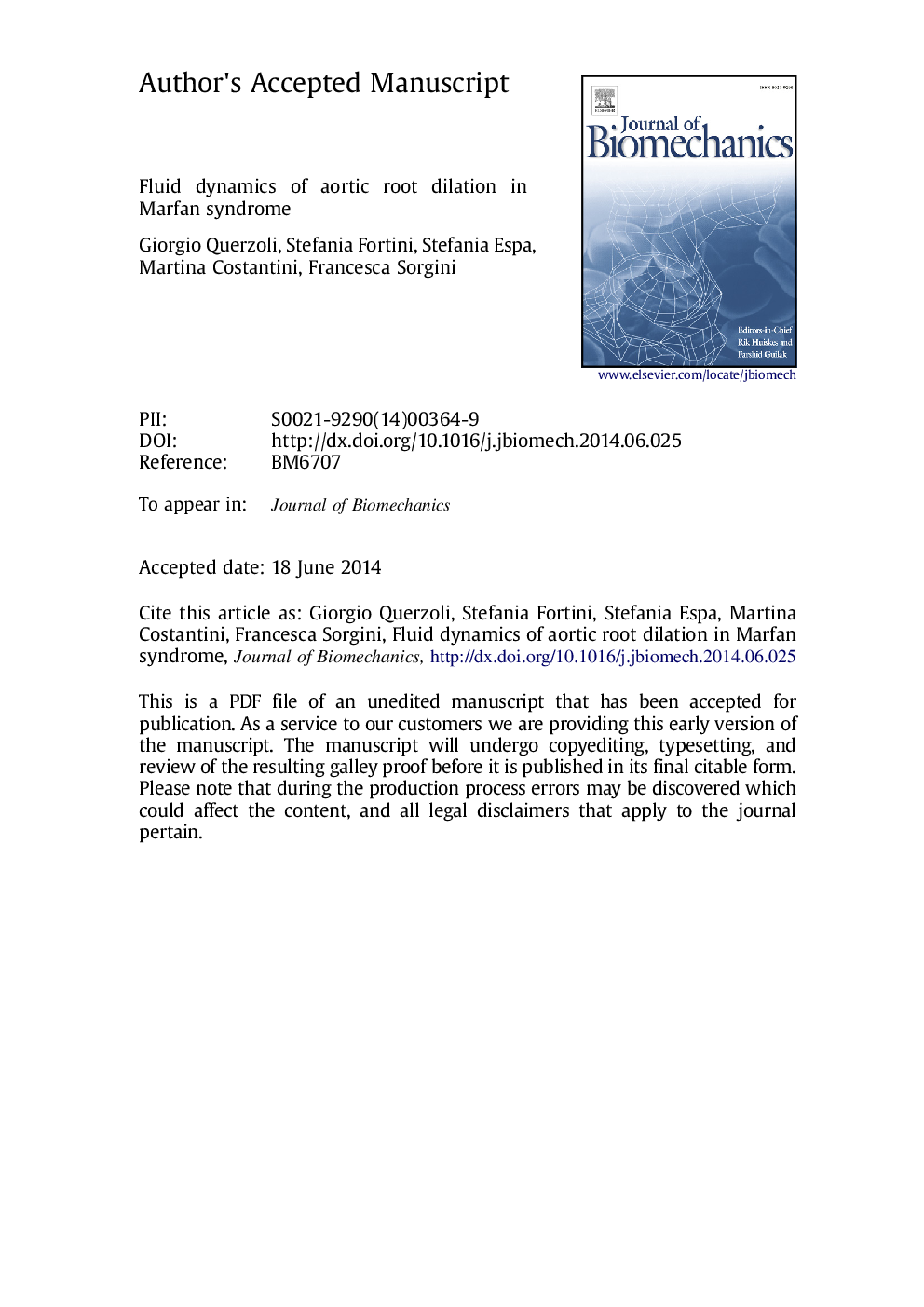| Article ID | Journal | Published Year | Pages | File Type |
|---|---|---|---|---|
| 10432130 | Journal of Biomechanics | 2014 | 23 Pages |
Abstract
Aortic root dilation and propensity to dissection are typical manifestations of the Marfan Syndrome (MS), a genetic defect leading to the degeneration of the elastic fibres. Dilation affects the structure of the flow and, in turn, altered flow may play a role in vessel dilation, generation of aneurysms, and dissection. The aim of the present work is the investigation in-vitro of the fluid dynamic modifications occurring as a consequence of the morphological changes typically induced in the aortic root by MS. A mock-loop reproducing the left ventricle outflow tract and the aortic root was used to measure time resolved velocity maps on a longitudinal symmetry plane of the aortic root. Two dilated model aortas, designed to resemble morphological characteristics typically observed in MS patients, have been compared to a reference, healthy geometry. The aortic model was designed to quantitatively reproduce the change of aortic distensibility caused by MS. Results demonstrate that vorticity released from the valve leaflets, and possibly accumulating in the root, plays a fundamental role in redirecting the systolic jet issued from the aortic valve. The altered systolic flow also determines a different residual flow during the diastole.
Related Topics
Physical Sciences and Engineering
Engineering
Biomedical Engineering
Authors
Giorgio Querzoli, Stefania Fortini, Stefania Espa, Martina Costantini, Francesca Sorgini,
